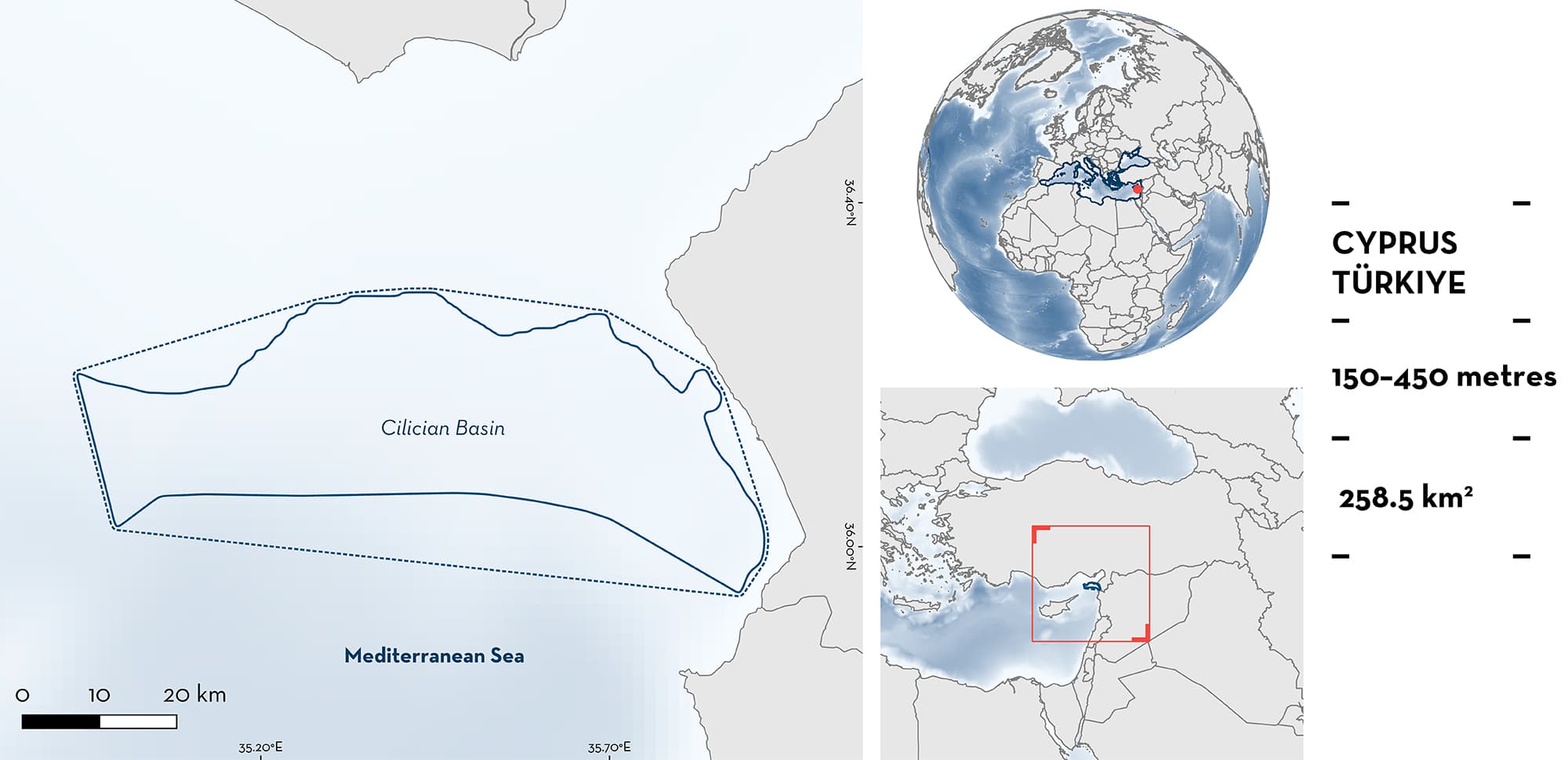ISRA FACTSHEETS
ISRA FACTSHEETS
MEDITERRANEAN AND BLACK SEAS REGION
Cilician Basin
Summary
Cilician Basin is located in waters straddling Cyprus and Türkiye. The Mid-Mediterranean Jet is the major water circulation feature in the area. It is also influenced by eddies as well as the Cilician Current and the Asia Minor Current. The substrate of the area is muddy. It overlaps with the North-East Levantine Sea Ecologically or Biologically Significant Marine Area. Within the area there are: threatened species (Angular Roughshark Oxynotus centrina) and reproductive areas (e.g., Longnosed Skate Dipturus oxyrinchus).
Download factsheet
Cilician Basin
DESCRIPTION OF HABITAT
Cilician Basin is located between Cyprus and southern Türkiye in the Levantine (Ediger et al. 2002; Pazi & Kucuksezgin 2006). A single trough is formed between the Mersin Shelf and the Cilician Basin (Ediger et al. 2002). The Mid-Mediterranean Jet is the major water circulation feature in the area (Robinson et al. 1991). The area is also influenced by eddies as well as the Cilician Current and the Asia Minor Current (Deliceırmak & Salihoğlu 2020). Upwellings are present year-round and vary in location across the basin and have seasonal fluctuations in intensity (Pazi & Kucuksezgin 2006; Deliceırmak & Salihoğlu 2020). This causes the direction of the water circulation to change spatial-temporally. These oceanic and physical features make the Cilician Basin a highly complex area (Deliceırmak & Salihoğlu 2020). The area is characterised by muddy substrates.
The area overlaps with the North-East Levantine Sea Ecologically or Biologically Significant Marine Area (CBD 2023).
This Important Shark and Ray Area is benthopelagic and is delineated from 150 m to 450 m based on the distribution of the Qualifying Species within the area.
CRITERION A
VULNERABILITY
One Qualifying Species within the area is considered threatened with extinction according to the IUCN Red List of Threatened SpeciesTM. The Angular Roughshark is assessed as Endangered (Finucci et al. 2021).
CRITERION C
SUB-CRITERION C1 – REPRODUCTIVE AREAS
Cilician Basin is as an important reproductive area for one shark and one ray species.
Four Angular Roughshark neonates were caught in the boreal spring of 2015 in trawl fisheries (Başusta et al. 2017). Neonates were defined based on their size (<20 cm TL), which was similar to the reported size-at-birth for this species (<<21–25 cm TL; Ebert et al. 2021). In addition, neonates were observed within the area during 2016, 2017, and in recent years according to catches in trawlers (N. Başusta unpubl. data 2023). One pregnant female was also caught (Başusta et al. 2015). Reports of neonates for this species are scarce (Capapé et al. 1999), so catches of these individuals within the area highlights its importance.
Between 2012–2016, neonates and young-of-the year (n = ∼100) Longnose Skates were reported within the area (Başusta et al. 2017, Başusta & Başusta 2019a, Başusta & Ozel 2022). Neonates were defined based on their size (12–19 cm TL) and band patterns in vertebrae (defined as age 0). The reported size-at-birth for the species is ∼17 cm TL (Last et al. 2016).
Download factsheet
SUBMIT A REQUEST
ISRA SPATIAL LAYER REQUEST
To make a request to download the ISRA Layer in either a GIS compatible Shapefile (.shp) or Google Earth compatible Keyhole Markup Language Zipped file (.kmz) please complete the following form. We will review your request and send the download details to you. We will endeavor to send you the requested files as soon as we can. However, please note that this is not an automated process, and before requests are responded to, they undergo internal review and authorization. As such, requests normally take 5–10 working days to process.
Should you have questions about the data or process, please do not hesitate to contact us.


